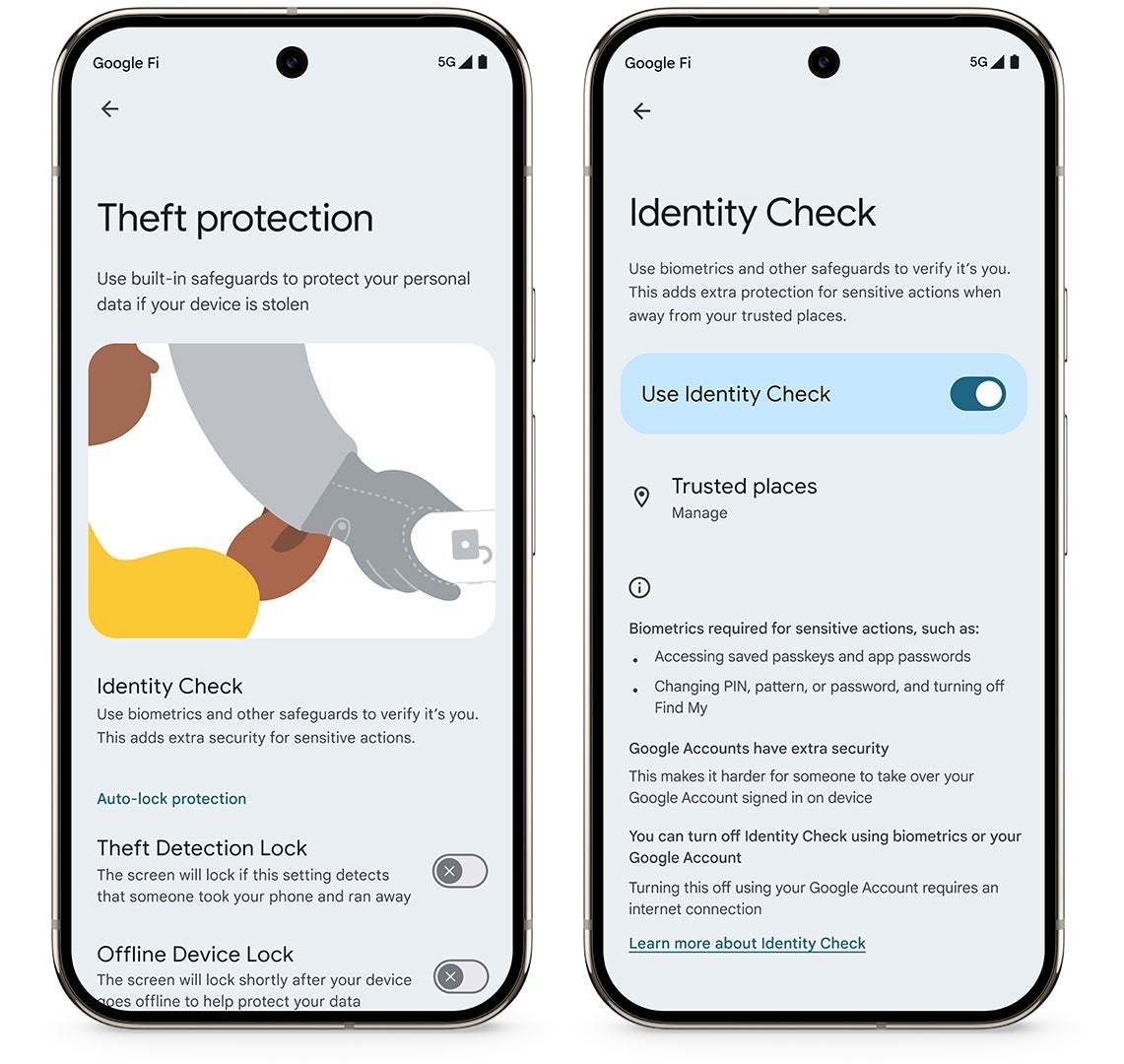What is Identity Check?

Identity Check settings menu. | Image credit – Google
Identity Check was first introduced to Pixel phones with the December 2024 Pixel Drop, and it later became available for Samsung’s Galaxy phones via the One UI 7 update.
To avoid unnecessary friction, the system only enforces this protection when your phone is outside of a trusted location (like your home), giving you seamless access when you’re in environments you’ve deemed safe.
Identity Check is coming to more Android phones with Android 16

Android 16 is expected to be released sometime in May, 2025. | Image credit – Google
The reason for the slow rollout is due to technical limitations: Identity Check requires changes to Android’s biometric prompt system, which is part of a non-updatable core OS component. These changes were included in Android 15 QPR1 and are now fully baked into Android 16.So if your phone runs Android 16 and has a Class 3 biometric sensor (most modern mid-range and flagship Android phones do include one), you’ll likely be able to enable Identity Check after updating.
Identity Check won’t be turned on by default, so once it’s out, you will have to toggle it on yourself by going to Settings > Google > Theft Protection to activate it manually.
Keep in mind that Identity Check is not unbreakable. While it is a very strong layer of protection, it only ensures that even if someone has your PIN, password, or pattern, they still can’t access sensitive settings or data unless they also pass a biometric scan.












